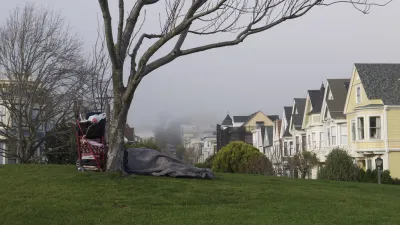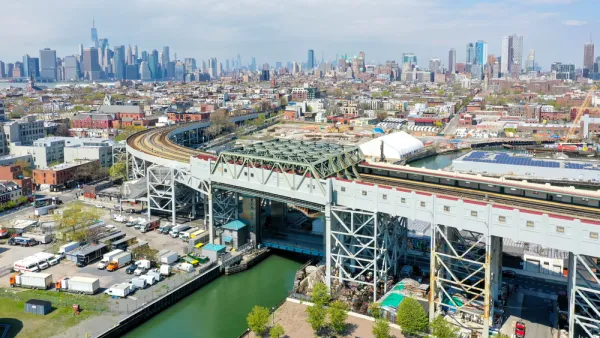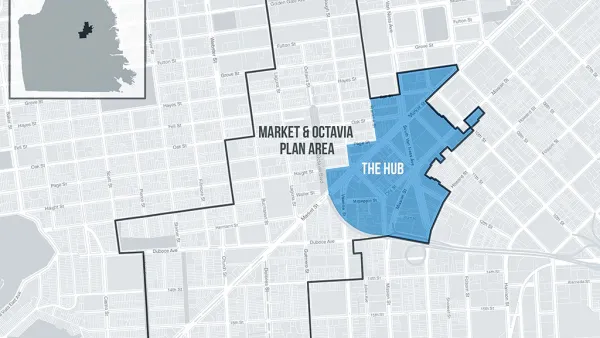In San Francisco, the relatively affluent are vocal in their denunciation of the "gentrifying" effects of the more affluent. This debate clouds the city's fundamental problems in housing its poor and working class residents, says Ilan Greenberg.

In San Francisco, "the debate [over gentrification] is dominated by fierce new champions of the anti-gentrification cause who aren't concerned so much about the truly poor being forced from—or tempted out of—their neighborhoods," writes Greenberg. "In their view, the victims of gentrification are also affluent, just less so than the people moving in."
“Middle-class people being bought out by upper-income people—that may be a political issue, but it’s not what we would call gentrification,” says Robert J. Sampson, an urban sociologist at Harvard University. “The affluent moving in—that’s an urban battle, but not gentrification.”
But for Dawn Phillips, co-director of programs for Causa Justa, a neighborhood organization responding to resident displacement in Oakland, and other advocates for the disadvantaged, these debates among the relatively affluent obscure the city's more significant problems.
"In Phillips’s world, the urgent issue isn’t whether the Bay Area’s new wealth has the same perspective and experience as the old. Nor is Phillips losing sleep over where in the city middle-class people are supposed to live," notes Greenberg. "Rather, for Phillips, the gentrification problem concerns government policies that for decades disinvested in neighborhoods, only to turn around and encourage real-estate investment when richer neighbors moved close. This, Phillips argues, systematically pushed vulnerable, disadvantaged people to the geographic margins, where there is little work, community resources, or personal networks."
FULL STORY: I Left My Home in San Francisco: The rise of the white, middle-class anti-gentrifiers

Analysis: Cybertruck Fatality Rate Far Exceeds That of Ford Pinto
The Tesla Cybertruck was recalled seven times last year.

National Parks Layoffs Will Cause Communities to Lose Billions
Thousands of essential park workers were laid off this week, just before the busy spring break season.

Retro-silient?: America’s First “Eco-burb,” The Woodlands Turns 50
A master-planned community north of Houston offers lessons on green infrastructure and resilient design, but falls short of its founder’s lofty affordability and walkability goals.

Test News Post 1
This is a summary

Analysis: Cybertruck Fatality Rate Far Exceeds That of Ford Pinto
The Tesla Cybertruck was recalled seven times last year.

Test News Headline 46
Test for the image on the front page.
Urban Design for Planners 1: Software Tools
This six-course series explores essential urban design concepts using open source software and equips planners with the tools they need to participate fully in the urban design process.
Planning for Universal Design
Learn the tools for implementing Universal Design in planning regulations.
EMC Planning Group, Inc.
Planetizen
Planetizen
Mpact (formerly Rail~Volution)
Great Falls Development Authority, Inc.
HUDs Office of Policy Development and Research
NYU Wagner Graduate School of Public Service




























